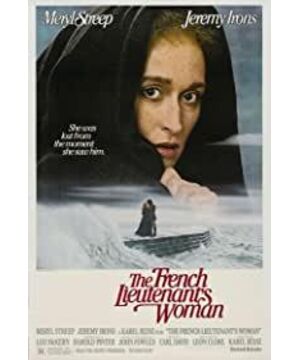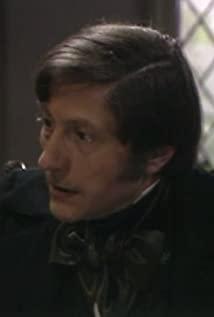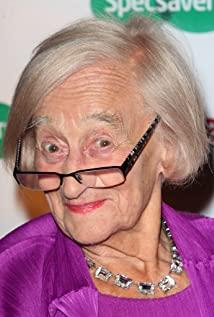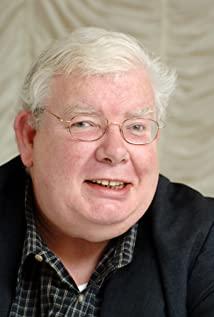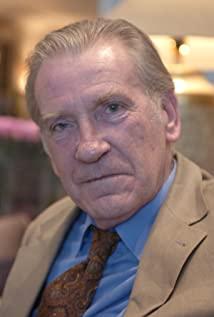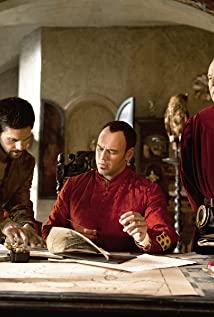In 1981, the 54th Academy Award for Best Adapted Screenplay, Best Editing Actress and other nominations.
The director of the film, Carlisle Reitz, was the founder of British free film in the 1960s, whose masterpiece is "Saturday Night and Sunday Morning". He is recognized as the best at adapting novels into films in the British film industry. He is also an expert in film technology, and wrote the book "Film Editing Techniques", which summarizes the artistic expressions of New Wave and 60s personality films.
The filming of this film in the 1980s was at the time of the rise of British “cultural reflection films”. British films experienced the violent impact of the anti-traditional wave in the 1960s and 1970s. After entering the 1980s, there was a clear wave of post-Western films returning. , a reflection on the tradition. British cultural reflection films are an important part of this wave of returns. Cultural reflection refers to the critical examination of traditional values and customs from a modern perspective. Film directors in the 1980s sought creative perspectives from such contrasts and contrasts.
"The French Lieutenant's Woman" is John Fowles' fifth novel, which sells well all over the world. The problem is that when the novel tells the story, it constantly uses the philosophical viewpoints of modern people to explain it. It is very difficult to express the author's intention in film language. . So Reidz approached the playwright Pinter, and the two spent three weeks deliberating and interpreting it in a film-within-a-picture way.
There are different opinions about changing the connection between the work and the original:
The theory of non-pure film adaptation headed by Andre Bazin (represented by The Diary of a Village Priest) believes that the original work should be reproduced almost intact on the screen.
The liberal adaptation theory represented by the Hungarian film theorist Bela Balaz (represented by Apocalypse Now) believes that the original work should be regarded as unprocessed material, regardless of the form of the material. Adaptation is impossible and unnecessary.
In 1980, a film crew came to the seaside town of Lyme, England, to shoot a love story that took place in the previous century.
In the Victorian era of England in the middle of the 19th century, Charles, a wealthy child living in London, came to Lyme Town to marry his fiancee, rich lady Ernestina. One day, he came to the seaside and saw the black woman Sarah, Sarah. In the local are governess, waiting for a lover French lieutenant, the woman known as French lieutenant. The actress who plays Sarah is Anna, and the actor who plays Charles is Mike. Both have families. Charles and Sarah fell in love with each other and finally had a relationship, but Charles never expected that Sarah was still a virgin, and there was no so-called French lieutenant at all. Charles sacrificed his reputation and ruined the engagement, but Sarah left without saying goodbye. Three years later Charles got word from Sarah that she was by a peaceful lake.
The film is adapted from the novel "The French Lieutenant's Woman" by the British writer John Fowles. The novel is full of the author's discussions, including the philosophical thoughts of Marx and Sartre. The ending is open and there are three endings. 1. Charles finally found Sarah, and the lover finally got married. 2. Charles occupied Sarah's body. He was willing to be mediocre and married his fiancee. 3 Charles found Sarah, and the two quarreled fiercely. Sarah had no regrets for leaving without saying goodbye, and Charles left Sarah in anger. The author leaves the judgment to the reader. Western literature classes focus on reading and writing. This is the mark that distinguishes traditional literature from modern literature. Traditional literature is to write. The creators pay attention to themselves, and the relationship between creators and viewers is high. So the creator taught to appreciate how to know society, to know life. In modern literature, the creator is more for the reader, the creator and the reader are equal, the narrative is handed over to the reader, and the judgment and thought are called to the reader. It greatly shortens the distance between the appreciator and the work of art. It enables the appreciator to change from passive to active, to go deeper into the works more actively, and to participate in the creation of works together with the creators. The long-shot theory of European films has something in common with "reading" in modern literature.
Screenwriter Harold Pinter's wonderful adaptation of the original:
1 Removed a lot of narration from the original work
2 Fix the open ending of the love story in the original book, that is, Charles and Sarah get married
3 In addition to the Victorian love story line, a love story line between a pair of actors and actresses in the 1980s was added.
Structural form of film play: layered structure, which is the highest structural form in the interlaced structure of time and space. The narration of the layered structure film is actually the narration of two time and space intertwined in one film, which is extremely rich in connotation and information. A modern film play structure.
Plot line a: Charles and Sarah from split to joined The end of this line is the beginning of the next line.
Plot line b: Mike and Anna go through
The two clues are difficult to divide the main line and the sub line.
The film's theme, a plot line, celebrates traditional love based on emotion. The b plot line is the tragedy of the modern concept of love. People who don't pay attention to emotions will eventually be tortured by emotions.
Deep Subject: A discussion of the concept of love between the two sexes, the director will show a traditional concept of sexuality and a concept of contemporary sexuality. The traditional concept emphasizes the unity of spirit and flesh, while modern people separate spirit and flesh. Mike was going against the inevitable result of human evolution, so when Anna left, he understood that Charles, who had been dismissed by him in the last century, called Sarah to Anna's back.
Narrative Style: Two plot lines with different styles
Past time and space: dramatic style, with obvious plot conflicts and twists and turns. The plot is well laid out, with obvious beginnings and turns. The audio-visual artifacts are heavy.
Time and space now: life-like, with less conflict, no obvious transition, just part of the life of the two actors. Audiovisual language strives to hide naturally.
Audiovisual program:
Editing: Short takes interrupt the natural flow of life due to the frequent sequence of shots, the effect of which is spacing and distance. Forehead long shots are closer to the natural state of life, and the resulting effect is "closer" and "intimate". In the past time and space, as Sarah and Charles moved from estrangement to closeness, the shots changed from short shots to long shots.
In the image of a film, the composition of shots reflects the relationship between the director and the audience. In the past time and space, the shots were short, the jump cut was many, and the dramatic performance reflected what the creator told you to watch. Now in time and space, there are many long shots, few jump cuts, and life-like performance, which reflects what the creator can see.
· Scenes: In the past, there were many close-up close-ups in space and time, reflecting the tendency of drama. Now, there are many panoramic and medium scenes in space and time, which reflects the tendency of non-drama.
Composition: In the past, the time and space composition was exquisite, but now the time and space composition is casual. In the past time and space, as Sarah and Charles moved from strangers to closeness, the camera composition changed from their single-person composition to their two-person composition. But now the time and space are the opposite. As Anna and Mike grow closer to estranged, the camera double turns into a single person.
Camera movement: In the past, there were many fixed camera positions, dramatic and artificial. Even if there is motion, it's more of a change in the focal length of the lens. Nowadays, there are many time-space motion lenses, changing camera positions, and the pursuit of life-like effects, so that people cannot perceive the existence of the camera.
Color: Sarah is dressed in black, a reflection of her twisted, repressed state of mind, and when Sarah and Charles are reunited at the end of the film, Sarah dons a bright white dress. Black is the portrayal of Sarah's charming soul. Anna is dressed in colorful clothes, reflecting her own mentality. It is the modern woman in the eyes of modern men: colorful, charming and unpredictable. Unlike Sarah who wrapped herself tightly in clothes, Anna first appeared on the screen, naked and in bed with Mike.
Charles started with black and gray clothes, and later transitioned to white. Mike started out in white clothes, but gradually transitioned to gray and black and white.
Tonal tendency: the past time and space are mainly gray and black. Grey sky, grey city. But now time and space are colorful and colorful.
Light: In the past, time and space went from dark to light. Sarah started out mostly in the dark indoors, when she was outside, or in the woods that were dimly lit, or cloudy or at night. In the end, Charles found Sarah, who was in the sun-drenched house. Now time and space are from light to dark. To start Anna and Mike are bright indoors and outdoors. In the end, Anna sat in front of the bright and dark mirror and disappeared into the vast darkness. Mike was alone in the shadows of the house.
Sound: In the past, the sound was clear in time and space, with many events and post-production preparations, strong drama, and many soundtracks with no sound source in the screen. Now, Time and Space uses simultaneous recordings, with natural and lifelike sounds.
Lines: The drama of the past time and space, the life of the present time and space. Sarah's lines are captivatingly charming. The fiancee's lines are secular, extreme, selfish, self-righteous. For example, when the fiancée learns that Charles is coming to propose, she panics and dresses up like a maid, showing her lack of assertiveness and aesthetic taste. And the owner of Sarah's service passed away and went to a new family to be a governess. Sarah asked the introducer "Can you see the sea there?" instead of asking about salary and living conditions.
Music: It expresses the music specially made by Sarah, using traditional western musical instruments. The melody of the music is elegant, ethereal and sad. Mr. Qi's most prominent violin solo is euphemistic, beautiful and aloof. Matching with the fiancée is light and sweet music.
Paragraph analysis:
The opening two shots transition the real time and space to the past time and space, which is breathtaking. These two shots are actually a gradual process of changing from a small scene to a large scene. The composition of the first shot is a close-up shot, mainly explaining the character of Anna, who is holding a small mirror. Mirrors are an important dramatic factor, and the film begins with a small mirror and ends with a large mirror. The first shot is pulled from close-up to panoramic, with two roles, first of all to show the relationship between Anna and the environment, that is, the messy filming scene. Secondly, it is emphasized that Anna is in the present time and space, paving the way for the next time and space transformation. At this time, the music also changed from the noisy ambient sound of the first shot to Sarah's music.
How the temporal transition is accomplished in the second shot: the first is the actor's transition from an absent-minded performance state to a passionate Sarah. The composition at the beginning of Shot 1 and Shot 2 is full of symbols of modern time and space. In shot 2, the symbols of the present time and space are gradually reduced, and only the props who set off fireworks are left, and finally disappear. His removal from the composition is the external narrative sign of the film's time and space changes, while the appearance of the violin solo is a sign of the inner spiritual essence of the film's two space-time transitions.
Real time and space and past time and space: edit the former with long shots and the latter with short shots. In the composition, the former is big and the latter is small. The former is casual, the latter dramatic. In terms of camera movement, the former moves and the latter is fixed.
Transitions are very important: for narrative coherence and uninterrupted characters. Or so that the audience's viewing thoughts are not interrupted, and the transition shots are mainly composed of connecting shots.
【Connected Lenses】: In a group of shots, the latter shot contains part of the content of the former shot. This prevents the feeling of jumping.
Proposal and sleeping are two big time spans. The connection is made by the same actor, and the present time and space are emphasized with the ringing of the telephone. There is an inner connection between the two paragraphs, that is, the connection in meaning. The process of courtship between men and women in the past time and space should be confession, marriage proposal, and sex. But the irony is that going to bed is the end of a bygone era. But it is the starting point of modern society.
The seaside encounter was a turning point in Charles' love life, and at the heart of it was how the scene showed Sarah's charm. First of all, the seaside long embankment is selected for the scene, and the background is the vast sea. The charm of the sea and the charm of Sarah are superimposed. The gloomy weather made Sarah look like a ghost. The sea fog in front of the camera is like an elves in the depths of the sea. Low-light lighting enhances the ambience. Cool tones, mysterious music. Pushing the camera represents the continuous strengthening of Charles' eyes, and vividly shows that Charles' heart is constantly approaching Sarah. Push the camera to show love.
The places where the past and present are separated are all spacious halls in the same white house, with sharp contrasts.
The proportion of the present time and space and the past time and space are distributed. The first half is the past time and space, and the second half of the present time and space increases, which is in line with people's normal psychology of watching movies, and the narrative gradually evolves in chronological order.
The role of the mirror:
·The beginning and the end are echoed, starting with a small mirror and ending with a large mirror.
·A kind of observation, from the small mirror at the beginning of the film, the present Anna sees the past Sarah. And in the big mirror at the end of the film, the current Anna sees the current Anna.
Two important backgrounds in the film: the sea and the lake. The image of Sarah is always and still connected, mysterious, uneasy, beautiful and unpredictable. These words to describe the sea can also be used for Sarah. At the end, the two of them went boating on the lake, which represents tranquility and serenity.
How to show the charm of a character is in the play and audio-visual language.
Play:
Beauty of nature: Sarah is the daughter of nature, her fiancee is often in artificial garden rooms, and Sarah often appears in natural environments such as hillsides, meadows and seaside, which is the beauty of nature. Sarah is arrogant and has an independent personality, and even gives up love for personal independence. Sarah also has an important quality that is mysterious and elusive
Audiovisual:
Sarah basically appeared in cloudy, foggy, rainy days, and the low-light lighting scheme created a mysterious image effect of Sarah. Black clothing is not only a reflection of distorted and depressed mood, but also a portrayal of Sarah's charming soul. In terms of camera movement, the first is the contrast between movement and stillness: Sarah is the spirit of the earth. In the room, the camera position is fixed, but in nature, the camera begins to move richly, showing the relationship between Sarah and the earth.
View more about The French Lieutenant's Woman reviews


